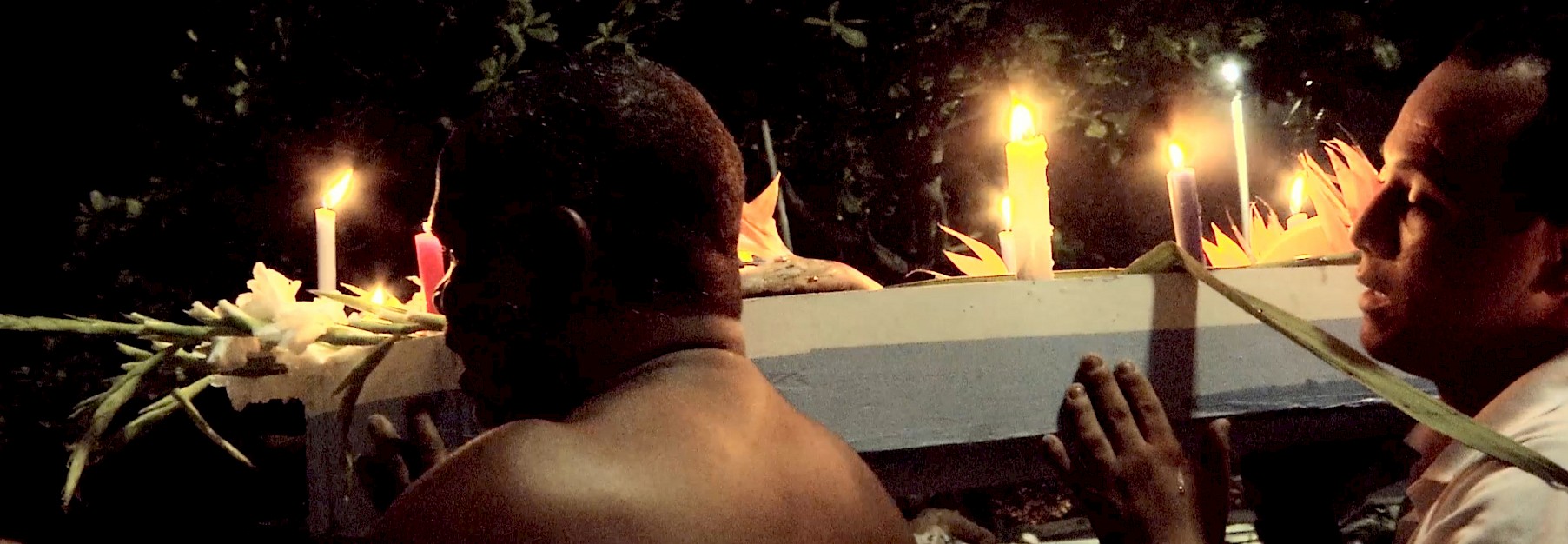Ano Novo em Copacabana
13:56
Umbanda. Terreiro Tia Maria da Bahia. Copacabana Beach. Rio de Janeiro. New Year's Eve
New Year’s Eve
It’s midnight on the last night of the year, a time for fireworks to sparkle across the sky that stretches over the beaches of Rio de Janeiro. It’s an iconic Brazilian image: from above, a massive crowd of people dressed in the same color jump into the ocean, a pixelated painting that can be seen on shiny screens all over the world.

When standing on the sand, what you see is much smaller than what you feel. Gathered bodies search for a route towards the waves: you must skip seven waves as soon as the new cycle starts, as marked on the calendar. From an African heritage, the ritual serves to invoke the strength of Iemanjá for the year. The number of waves has an explanation: seven are the days of the week, seven are the chakras of the body, seven are the seas and seven is the number of Exu, son of the queen of waters and owner of the ways. There are those who swear it works and those who do not believe, but it does not cost to jump.
Chants and cries can be heard as cell phone cameras make live broadcasts of this celebration that is a fundamental part in the lives of so many Brazilians. Eating grapes for luck, hugging your loved ones, calling family members. Wearing white for peace and gifting flowers to the ocean to attract prosperity.

“I set my boat on the water
So that I can sail
But first I ask permission
To my mother, Iemanjá”
Song during offering to Iemanjá on New Year’s Eve
Those with sharper eyes might ask: what is the human thread binding the similarities of so many rituals? What is the purpose of throwing flowers and wishes and thanks into this city’s salty waters, and into the waters that wash over more than forty-three hundred miles of this country’s coast?

They say the Umbanda believers were the first to occupy Rio’s sandy shores with their long skirts and beaded necklaces. In small and perfumed boats with lit candles, they ship off their duties to Iemanjá.
“Oh, Iemanjá,
Oh, Iemanjá,
Oh, Iemanjá.
Who rules the waters?
Oh, Iemanjá”Song during offering to Iemanjá on New Year’s Eve

A way to start a new year with Axé: cheers and confirmation to everything that is beautiful and sacred, good energy that is sent out into the universe as food for dreams. Practices that overflow from several circles and cultures and peoples.
By taking hold of heads and bodies, the mother of all orixás – the Queen of the Sea – proves that gift and presence are the same thing once your spirituality awakens. They thankfully close their eyes and open the path for their children: saint fathers and saint mothers incorporate Iemanjá and Iansã and Nanã and all the entities take over the dancing bodies for the days that have passed and those that are yet to come.

Purification in the crowd, out in the open, a few blocks from the subway station. A historical ritual that simply requires that coexistence be respected. While these many faiths and bodies dance together on the same beach to celebrate good wishes, Rio de Janeiro will be resilient in its vocation and potency: an encounter for seas of peoples.
